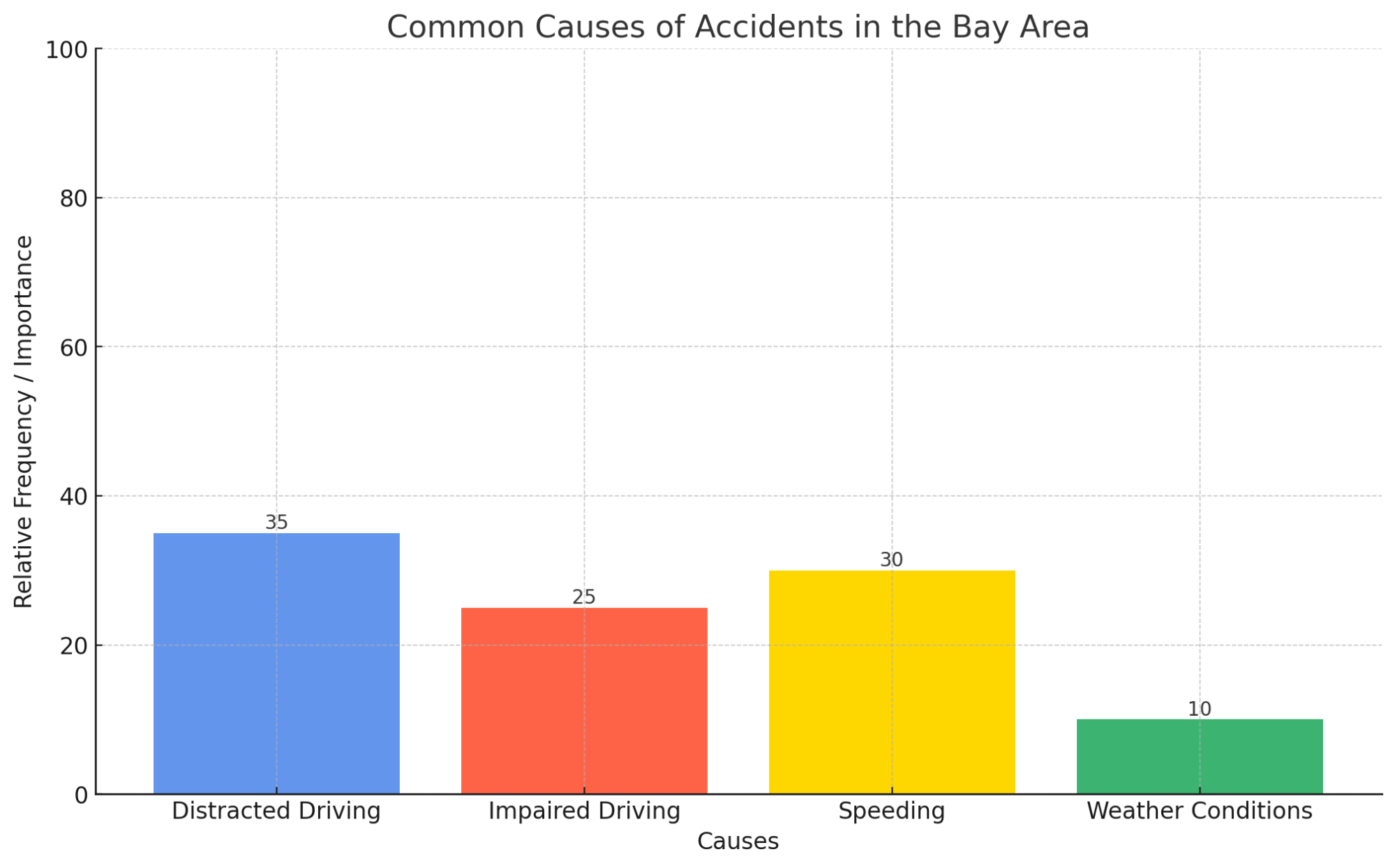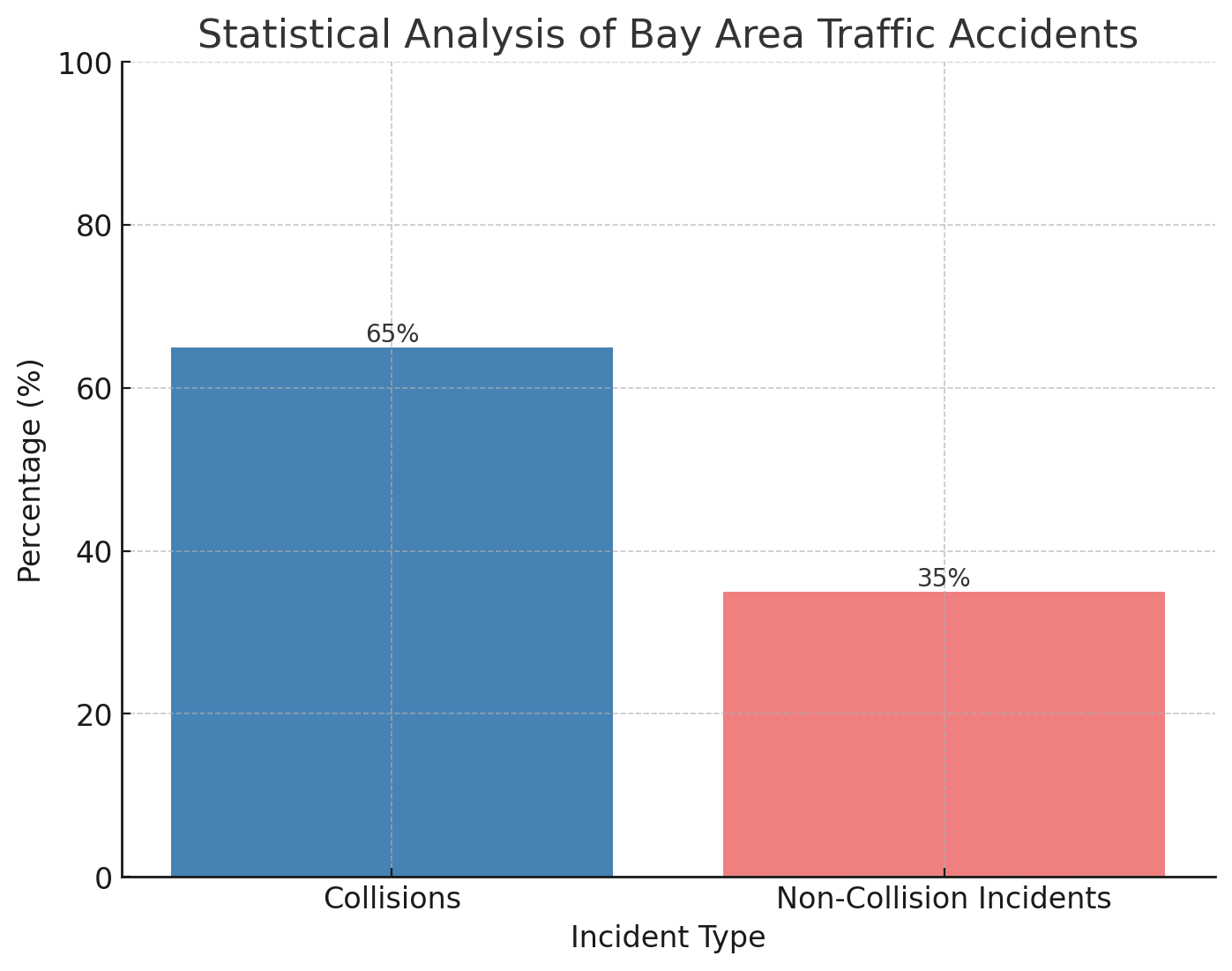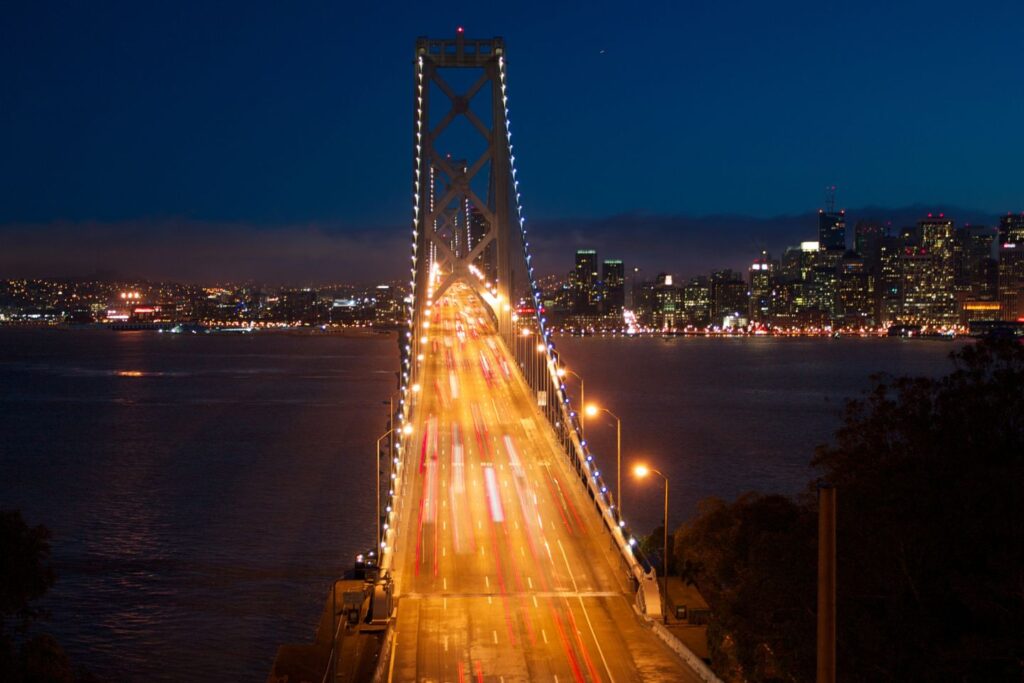In 2022, California witnessed 216,366 traffic accidents, highlighting a critical concern for the Bay Area. The web of freeways, bridges, and city streets in this region often sees a range of traffic mishaps. These can vary from simple fender-benders that disrupt the morning commute to severe collisions causing injuries, fatalities, and halting essential services.
Addressing the root causes of these accidents is crucial for developing effective prevention strategies. The impact of these incidents places a heavy load on public health and safety systems. This article aims to explore the factors contributing to traffic accidents in the Bay Area. It will provide an overview of the situation and discuss potential solutions for this concern.
Overview of Traffic Accidents in The Bay Area
Traffic accidents in the San Francisco Bay Area are affected by various factors, such as the weather, the amount of traffic, and how people drive. The area’s high population and frequent commuting make road incidents common.


Factors Impacting The Rate of Accidents
Different types of accidents happen, including those involving cars, pedestrians, and cyclists. They often occur more during the busy morning and evening commutes. Here’s what contributes to these accidents:
- Weather: Rain and fog can make it hard to see and drive, leading to more accidents.
- Traffic Volume: More cars on the road mean a higher chance of crashing.
- Driver Behavior: Speeding, not paying attention, and driving under the influence are major reasons for accidents.
Recent Measures
Authorities monitor traffic and accidents closely. They’ve noticed patterns in when accidents happen, often linked to events or the time of year. To reduce accidents, efforts include:
- Making sure traffic laws are followed
- Launching campaigns to educate the public on safety protocols
- Improving roads by installing better signs and ensuring maintenance
- Regularly assessing and providing real-time updates on incidents, helping drivers anticipate and navigate through the Bay Area.
Common Causes of Accidents in the Bay Area


The Bay Area is well-known for its challenging traffic conditions, making it essential for drivers to be aware of the factors leading to accidents to ensure safe travel. Understanding these causes can help drivers make better decisions on the road, potentially reducing the risk of accidents. Common reasons for traffic accidents in the Bay Area include:
- Distracted Driving: In the Bay Area, distracted driving has emerged as a top reason for car accidents. These activities divert attention from the road, significantly increasing the risk of a collision. Common distractions include:
- Eating and drinking
- Adjusting the car’s systems
- Usage of mobile devices while driving
- Impaired Driving: Driving under the influence of alcohol or drugs severely affects judgment, reaction time, and control over the vehicle. Despite strict laws and safety campaigns aimed at controlling this behavior, it remains a persistent problem.
- Speeding: Accidents caused by high speeds result in more injuries and property damage. They pose a significant risk to life. Many of these accidents could be avoided by simply being more careful and following road rules and speed limits.
- Weather Conditions: Harsh weather, though less frequent, plays a role in causing road accidents in the Bay Area. Rain or fog, among other weather-related factors, can significantly lower visibility. This makes navigating the roads more challenging and increases the chances of accidents.
Impact on Public Health and Safety
Traffic safety is a significant concern in the Bay Area, with implications for public health and safety. The region has experienced several traffic-related incidents, with various factors contributing to unsafe road conditions.
Public Health Concerns:
- Increased mortality: The prevalence of traffic accidents puts lives at risk. For example, the tragic death of a four-year-old in San Francisco underscores the lethal consequences of vehicle incidents.
- Health impact from traffic pollution: Studies indicate that traffic-related pollution could be linked to various health issues, from aggravated asthma to complications for pregnant women and children.
Safety Initiatives:
- Policy shifts and the introduction of speed cameras are attempts to improve road safety and reduce accident rates in the Bay Area.
- Infrastructure improvements are being explored to address rising car accident statistics and enhance the resilience of the region’s road systems against challenges like coastal flooding.
Statistics:
- Road accident data provides insight into the scale of public health concerns. For instance, Chennai reported a significant number of accidents and fatalities, emphasizing the global nature of traffic safety issues.
Impact on Daily Life:
- While infrastructure and policy changes are geared towards long-term benefits, residents currently face daily disruptions attributed to traffic delays and accidents, with coastal flooding exacerbating these issues.


Legislation and Traffic Laws
In recent years, the Bay Area has been proactive in addressing traffic safety through legislation. For example, San Francisco officials have committed to improving road safety after tragic incidents involving pedestrians.
California has introduced several new traffic safety laws, as highlighted by the California Highway Patrol (CHP). These efforts underscore the state’s commitment to reducing accidents and enhancing safety on the roads. For 2024, California has enacted new laws involving the use of speed cameras to enforce speeding violations, a notable shift toward automated traffic enforcement measures. This information, including the details of the new laws, can be further explored in KRON4’s reporting.
Everyone in the Bay Area—drivers, cyclists, and pedestrians—must understand and follow traffic rules. This is not just about meeting legal requirements; it’s also about ensuring everyone’s safety. Traffic regulations in the country evolve to address challenges related to transportation and urban mobility, aiming to create a safer environment for all.
Prevention and Education Initiatives
Initiatives aimed at reducing traffic accidents in the Bay Area focus on the Vision Zero strategy, which targets eliminating traffic deaths and serious injuries. This comprehensive strategy focuses on:
- Education: Informing road users about safe practices.
- Engineering: Designing safer streets.
- Enforcement: Upholding traffic laws rigorously.
While various programs have been implemented to increase public awareness about traffic safety, key education-focused efforts include:
- Community Workshops: Agencies organize workshops to engage with communities, emphasizing the importance of road safety.
- School Programs: Targeted programs for students work to instill safe driving habits from a young age.
The Metropolitan Transportation Commission’s adoption of the Regional Safety/Vision Zero Policy includes strategies for partner collaboration to support equitable and data-driven action towards the Vision Zero goal.
Infrastructure and Road Safety Improvements


Data from the Bay Area Traffic Incident Management Dashboard reveals that the most recent statistics on incident frequency showed a daily update pattern. Therefore, traffic safety in the Bay Area has been a significant concern, with several initiatives aimed at reducing accidents and improving road conditions.
Substantial federal grants are supporting the improvement of infrastructure. A notable achievement in this area is California securing a $139 million federal grant for enhancing street and highway safety across the state. The focus areas of improvement are:
- Street Resurfacing: Improving road conditions to mitigate accidents caused by poor surfaces.
- Enhanced Signage: Making navigation and compliance with traffic laws clearer for drivers, cyclists, and pedestrians.
- Traffic Calming Measures: Creating safer environments in residential areas through speed bumps and roundabouts.
- Technological Advancements: Implementation of advanced speed cameras to discourage speeding and upgrading to traffic signal systems for better flow and reduced congestion-related incidents.
Efforts are continuous, with local agencies and the State working together to ensure roads are safer for every traveler in the Bay Area.
Emergency Response and Management
Emergency response and management are key components to handling regular traffic cases, which can affect congestion levels and safety standards in the San Francisco Bay Area. These are a few things that Bay Area agencies focus on during traffic incidents:
- Coordination of agencies: This is crucial for efficient management in responding to the incident. It stimulates the quick and safe clearance of incidents, thus minimizing various dangers for both immediate responders and general commuters.
- Technological intervention: The California Highway Patrol’s public-facing incident feed provides real-time data on current road conditions, while Caltrans’ Performance Management System (PeMS) helps in the analysis and oversight of traffic patterns post incidents.
- Rapid response: Quick deployment of police, fire, and medical services.
- Traffic management: Implementation of detours and traffic controls.
- Clearance: Efficient removal of debris and vehicles.
- Communication: Providing timely information to the public via various channels.
The continuous improvement of these areas is vital in reducing the effect of traffic incidents on Bay Area roads.
FAQs
How can I find information about recent car accidents in the Bay Area?
Various news websites, including the San Francisco Chronicle, frequently report on the latest car accidents. These sites also provide traffic information and updates on Bay Area roadways, keeping readers informed about conditions on the roads.
Are there any mobile applications for real-time accident information nearby?
Yes, there are mobile apps, such as Waze or Google Maps, that provide real-time traffic reports and accident information for Bay Area drivers.
What exactly is a SIG Alert and when is it issued by the California Highway Patrol?
SIG Alert is an alert of the California Highway Patrol (CHP) informing drivers about important highway closures or accidents, which cause heavy traffic for at least one hour (or more).
What are the common causes of traffic congestion in the San Francisco Bay Area?
Traffic jams in the Bay Area are largely a result of roadworks, accidents, and the heavy flow of vehicles from people commuting especially at peak hours, like office hours and school hours.
How do I check for live traffic conditions on the San Francisco Bay Bridge?
You can also check live traffic conditions on the Bay Bridge through local traffic news reports both over websites and by tuning to news stations. Alternatively, you can make use of available apps that offer an ongoing update about road situations in real time.
What steps should I take if I’m involved in a traffic accident?
- Ensure Safety First: Immediately after an accident, prioritize the safety of all involved. Move to the side of the road to avoid rush hour traffic.
- Contact Emergency Services: If necessary, dial 911 for assistance.
- Exchange Information: Share identification details with the other party involved in the accident.
- Document the Damage: Take note of the damage to all vehicles involved, doing so thoroughly yet concisely.
If you were part of an accident, consider legal assistance. Think about getting help from a car accident lawyer to navigate the aftermath. The Personal Injury Center specializes in assisting individuals affected by such accidents.
Key Takeaways
|



